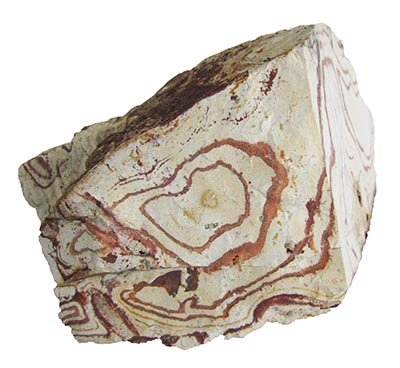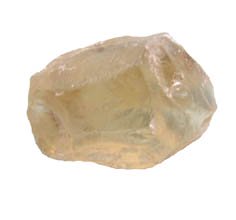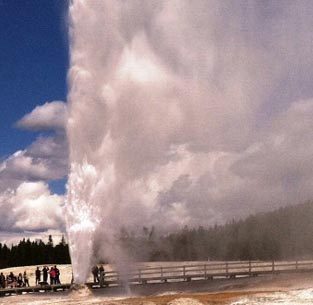Sign up for Lesson Plans, discounts & more!
Rhyolite Explosive Lava
Rhyolite is a fine-grained igneous rock with a high silica content. Its pale color is usually grey or pink.
All rocks are made of minerals. The mineral content of this lava is similar to granite, obsidian, pumice and tuff. Formed from granite magmas that partially cooled as they rose to the surface of the earth, all of these igneous rocks have large amounts of silica and contain quartz, mica, amphiboles and orthoclase feldspar.
Rhyolite and Gemstones
Rhyolite is also high in gas content. Gases rapped within the lava as it cools form vugs or gas-filled bubbles. When water containing dissolved minerals fill these vugs, conditions may be right for crystals and gemstones to grow. Topaz, agate, jasper, red beryl, and opal are a few of the crystals and gems that occur in rhyolite.
Rhyolite Eruptions
Look for rhyolite to form on continental plates or near their edges. This is where granite magmas erupt, producing rhyolite, obsidian, pumice or tuff.
How can so many different types of igneous rocks form from the same basic magma? It’s the different conditions under which the magma cools. When the eruptions are explosive, pumice or tuff is the result. Rhyolite or obsidian are made when the lava flows more smoothly from the eruption, but it takes especially quick cooling to produce obsidian from the smooth flow. All four of these igneous rock types can come from the same eruption.
Volcanos produced from granitic magma are rare, but they can be the most explosive of all eruptions. Yellowstone National Park, in the Wyoming, USA, is a spectacular example of this type of volcano. Yellowstone sits on top of a huge magma chamber, called a plume or hot spot. When water is trapped between the earth’s surface and the magma chamber, it is heated to boiling and has to erupt, producing some of the most beautiful and regularly-erupting geysers in the world. Old Faithful, found in Yellowstone, may be the most famous of the world’s geysers.
There is evidence across the U.S. west of past eruptions of the Yellowstone volcano. Layers of ash can be seen in roadcuts miles from the epicenter. Many scientists predict that when Yellowstone erupts again, it could cover North America in thick volcanic ash and cause clouds that could darken the entire planet from the sun for days or weeks. Now THAT”S a mighty volcano!
Learn More about Igneous Rocks

INTERESTED IN MORE? IF SO, YOU MAY WANT TO CHECK OUT OUR OTHER SITES:
fossilicious.com - Our online fossil and mineral rock shop.
fossils-facts-and-finds.com - An educational site about fossils.














